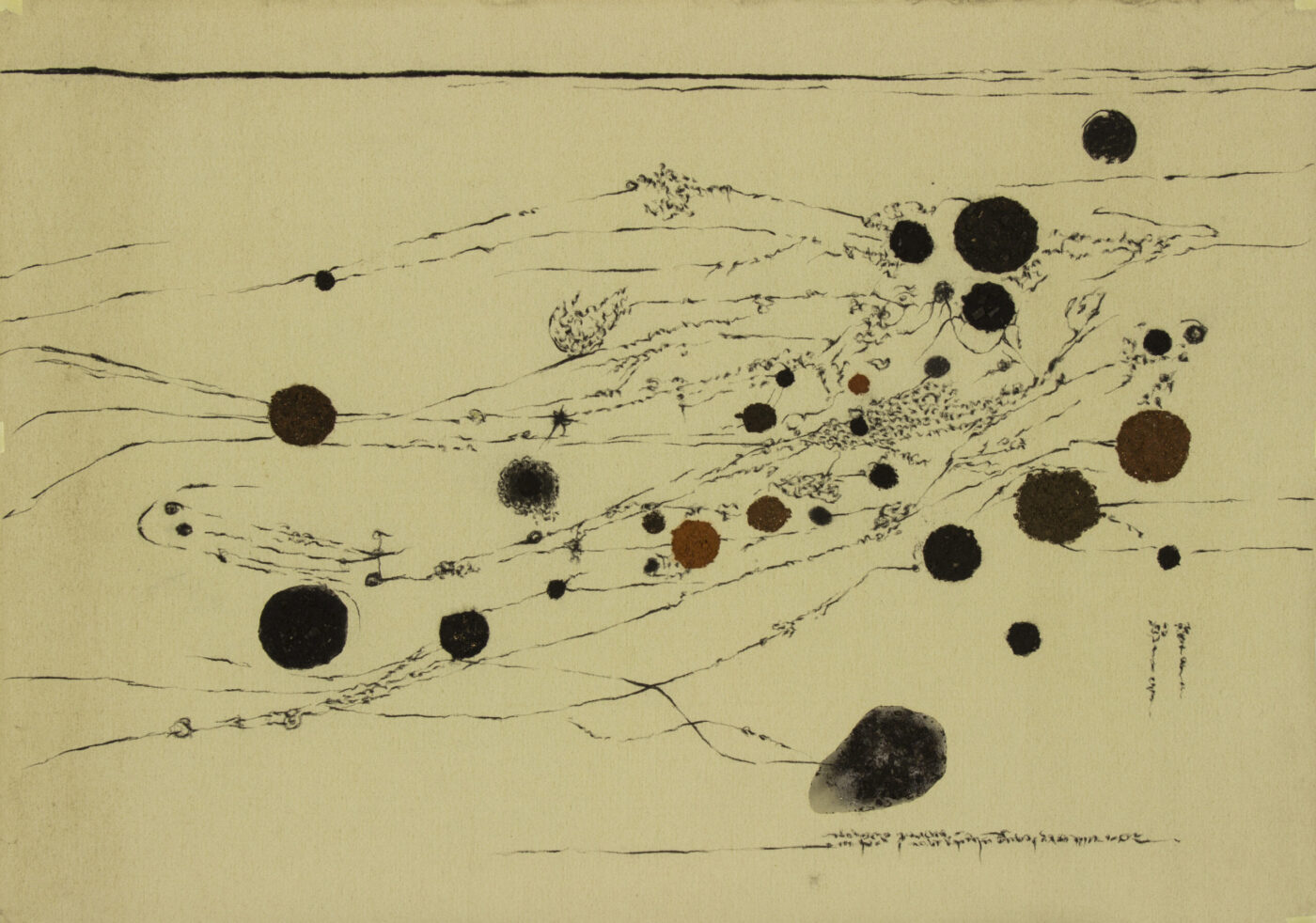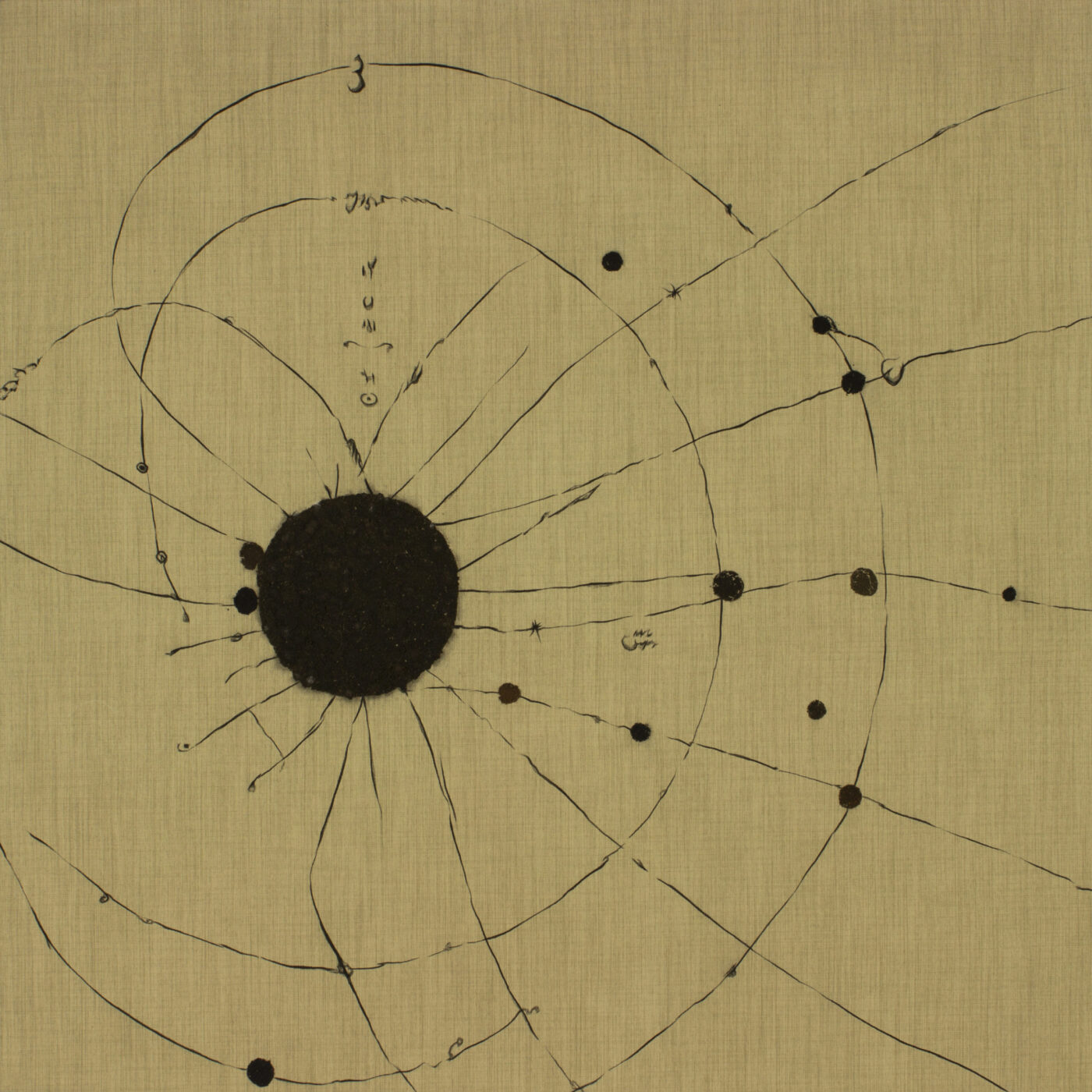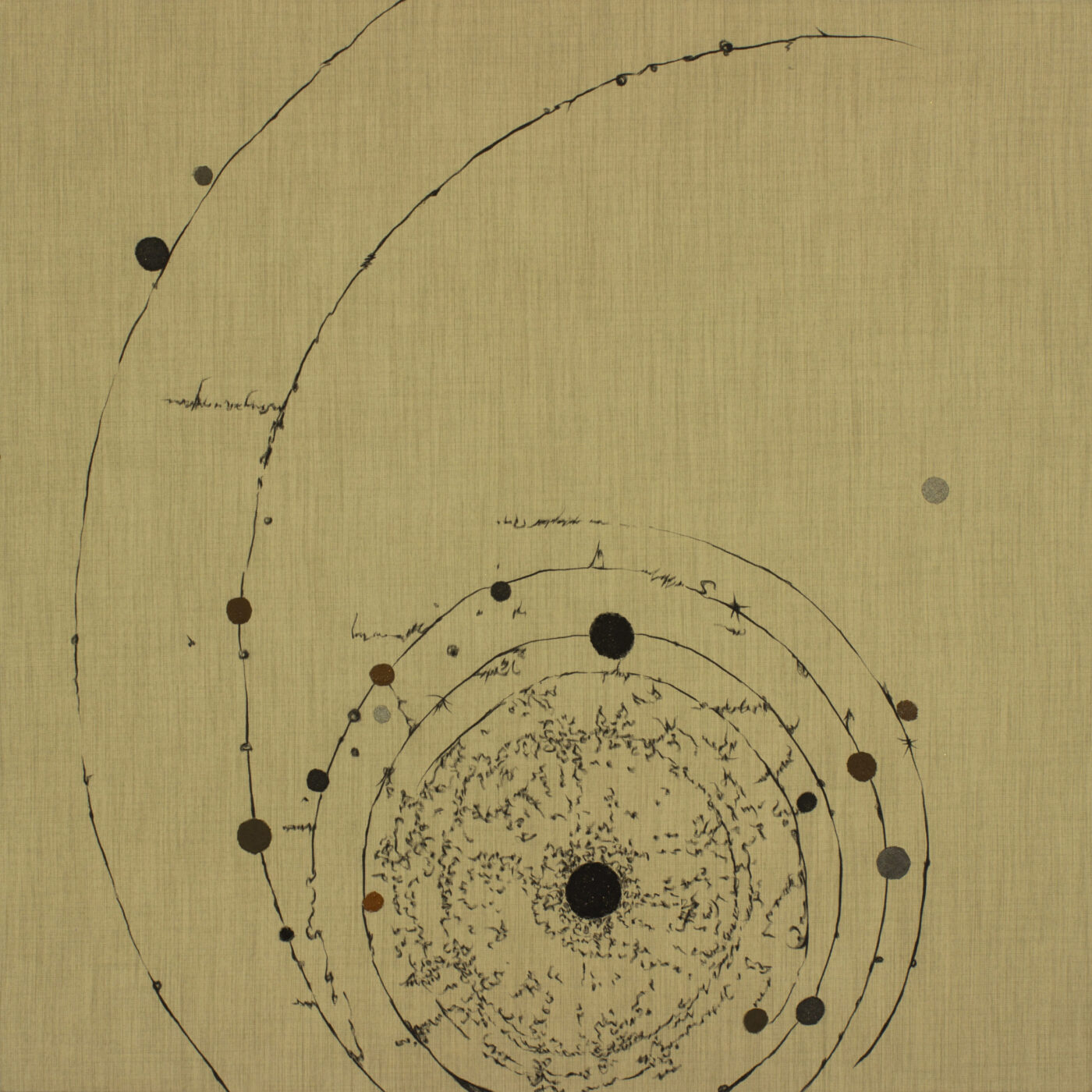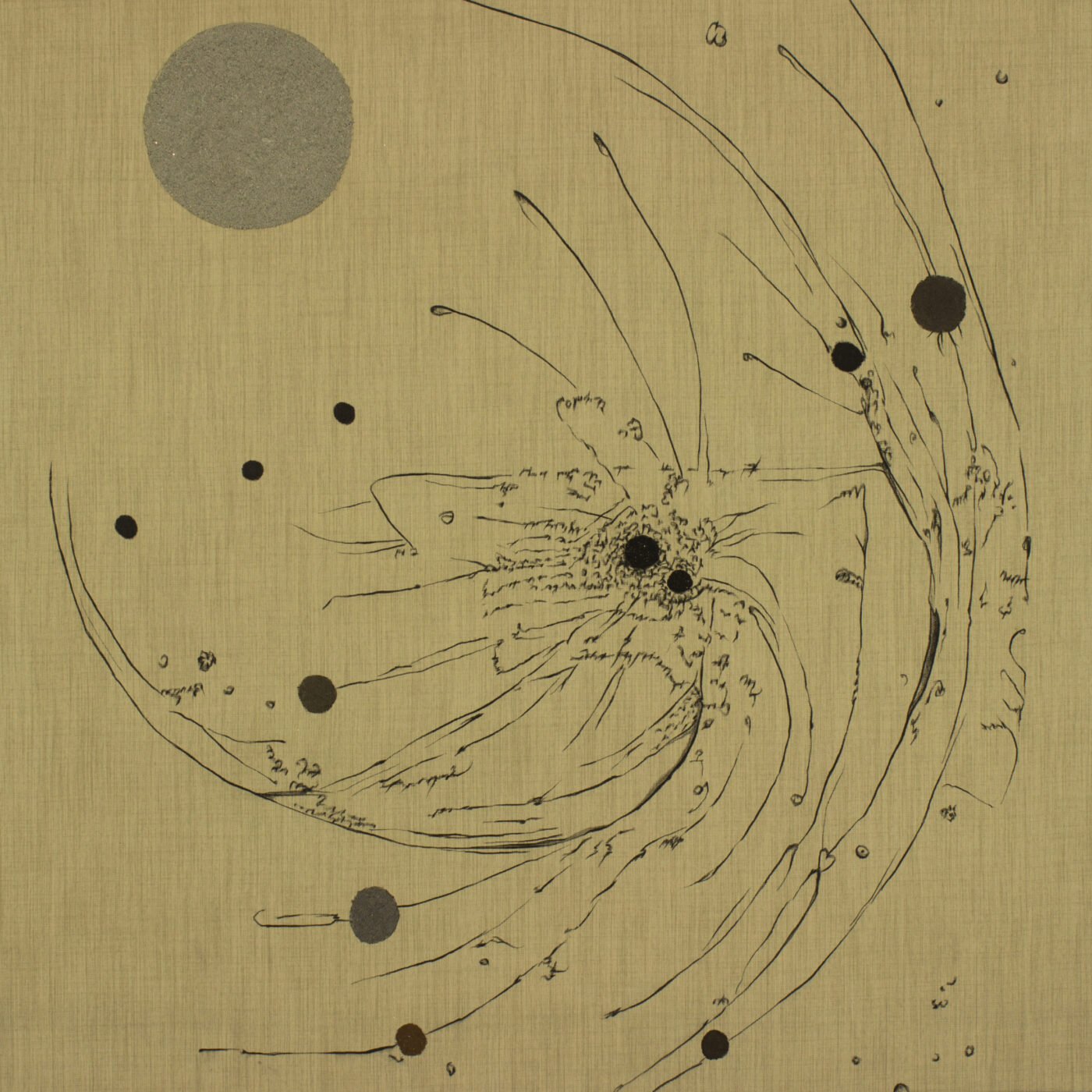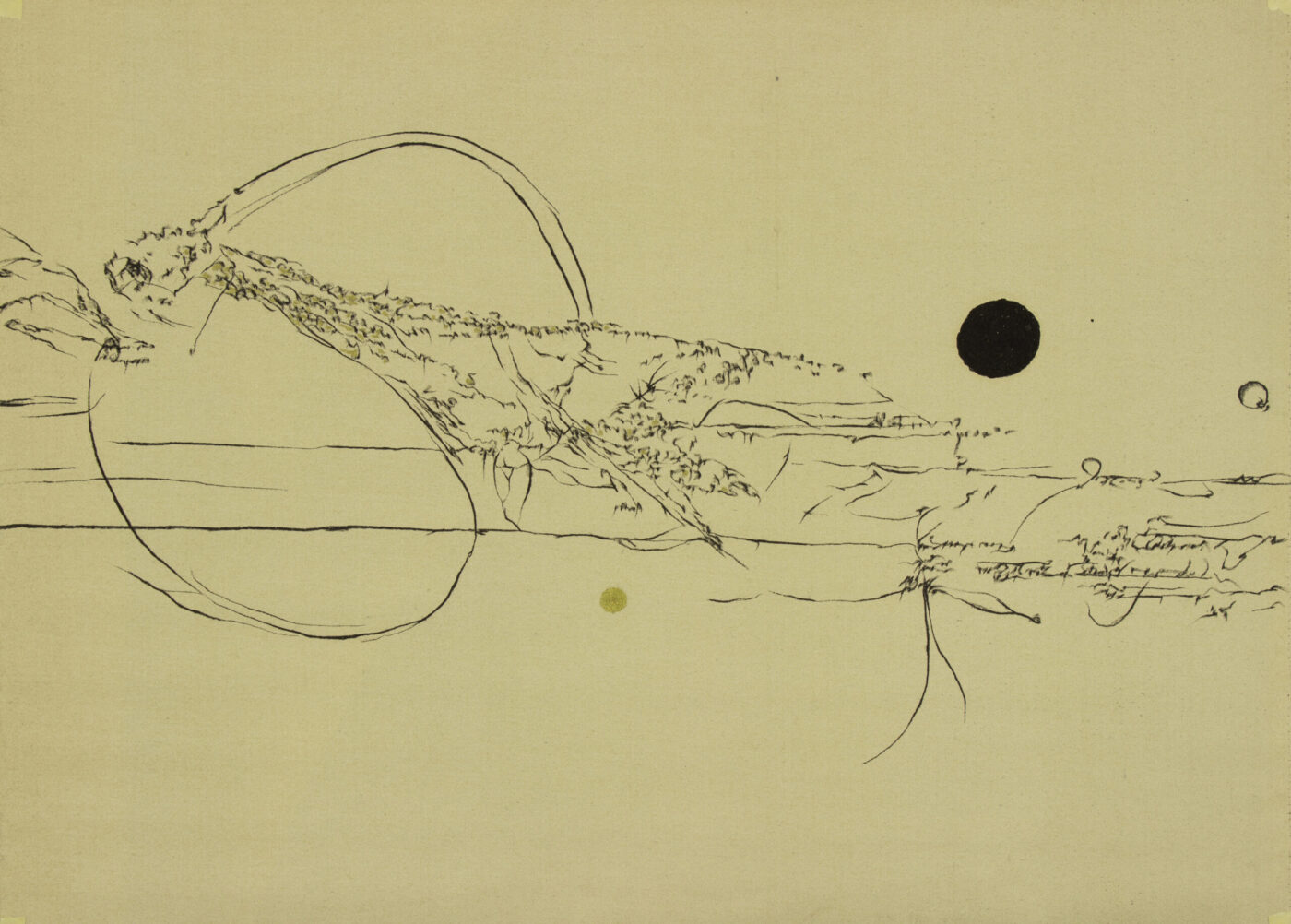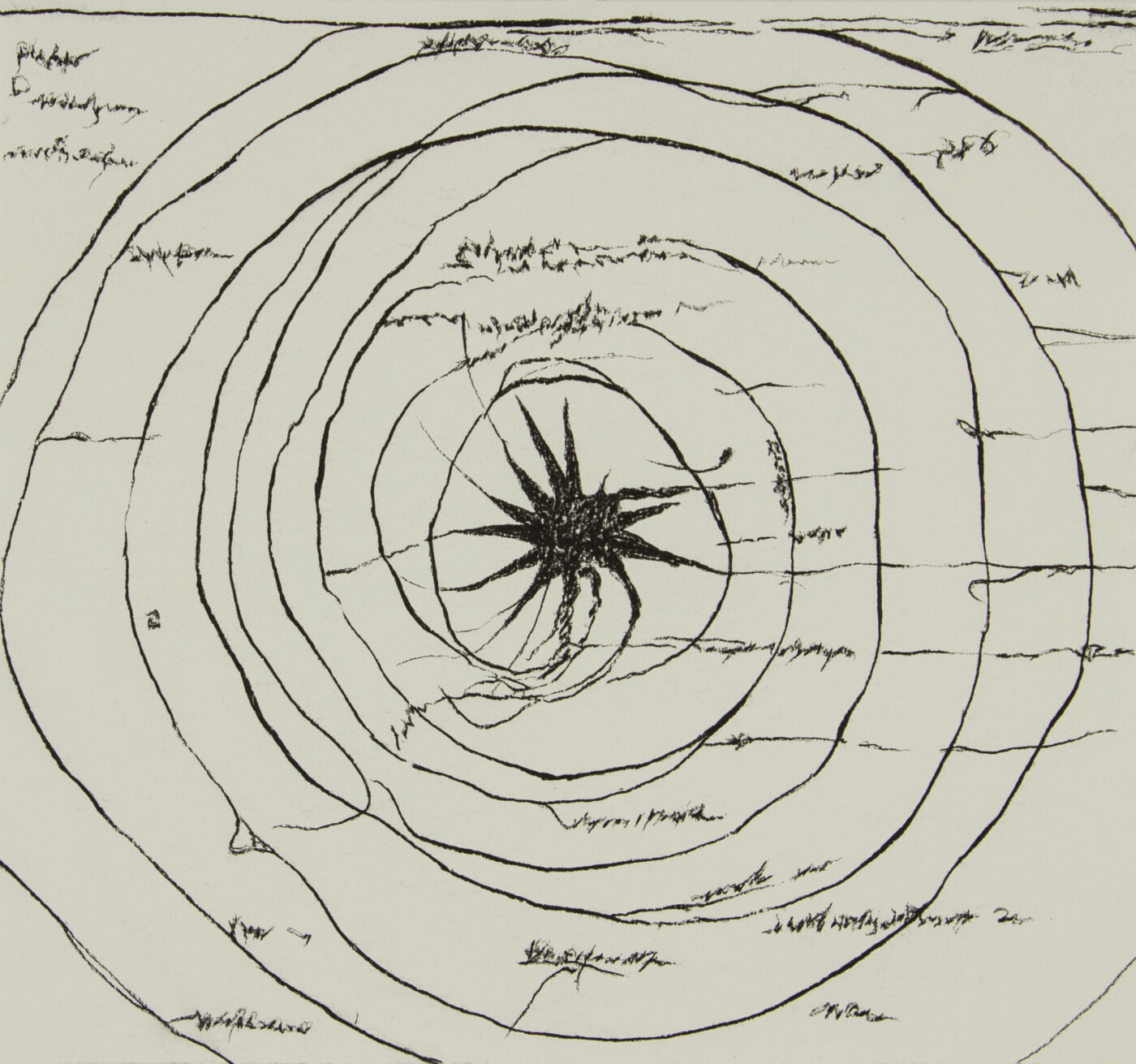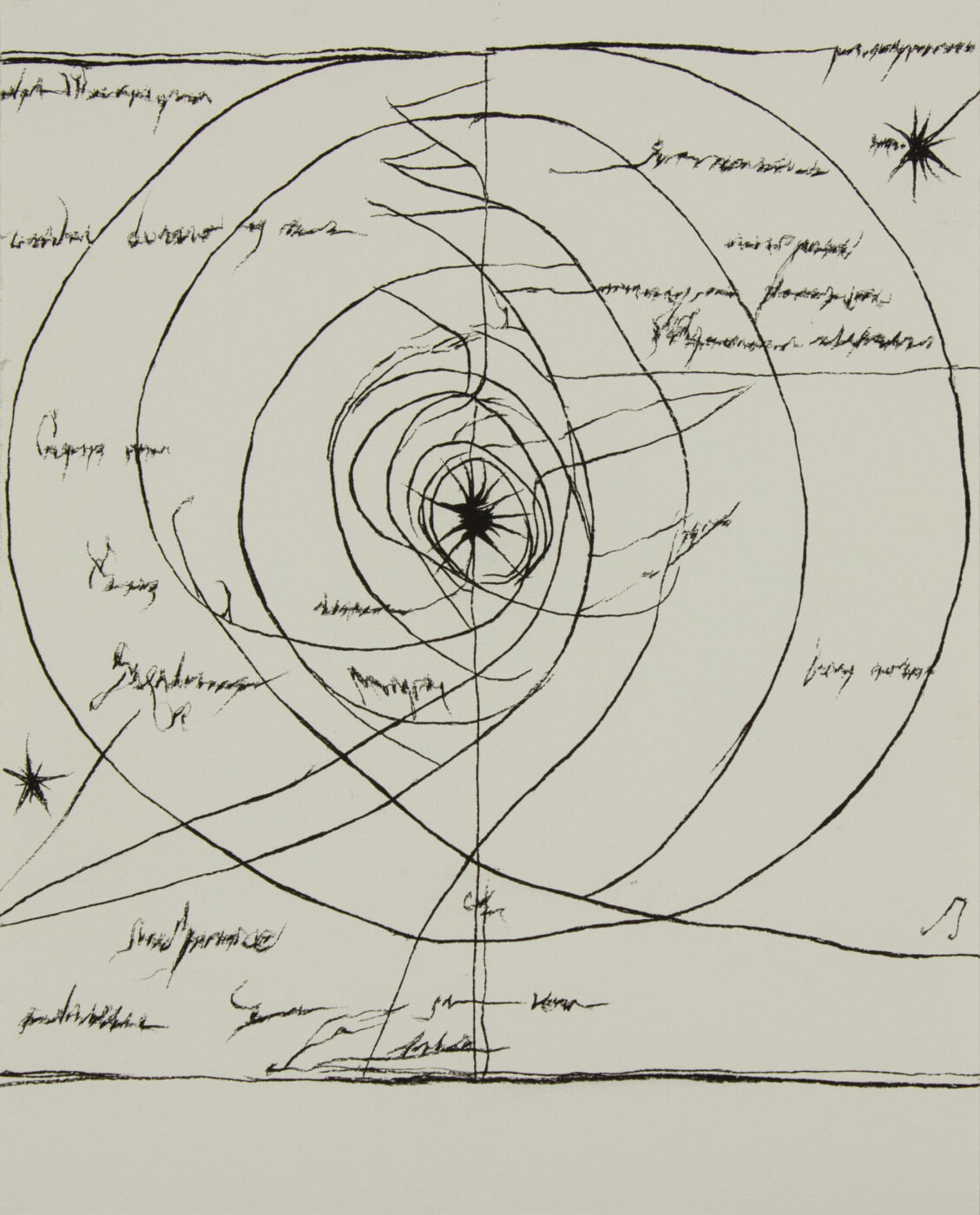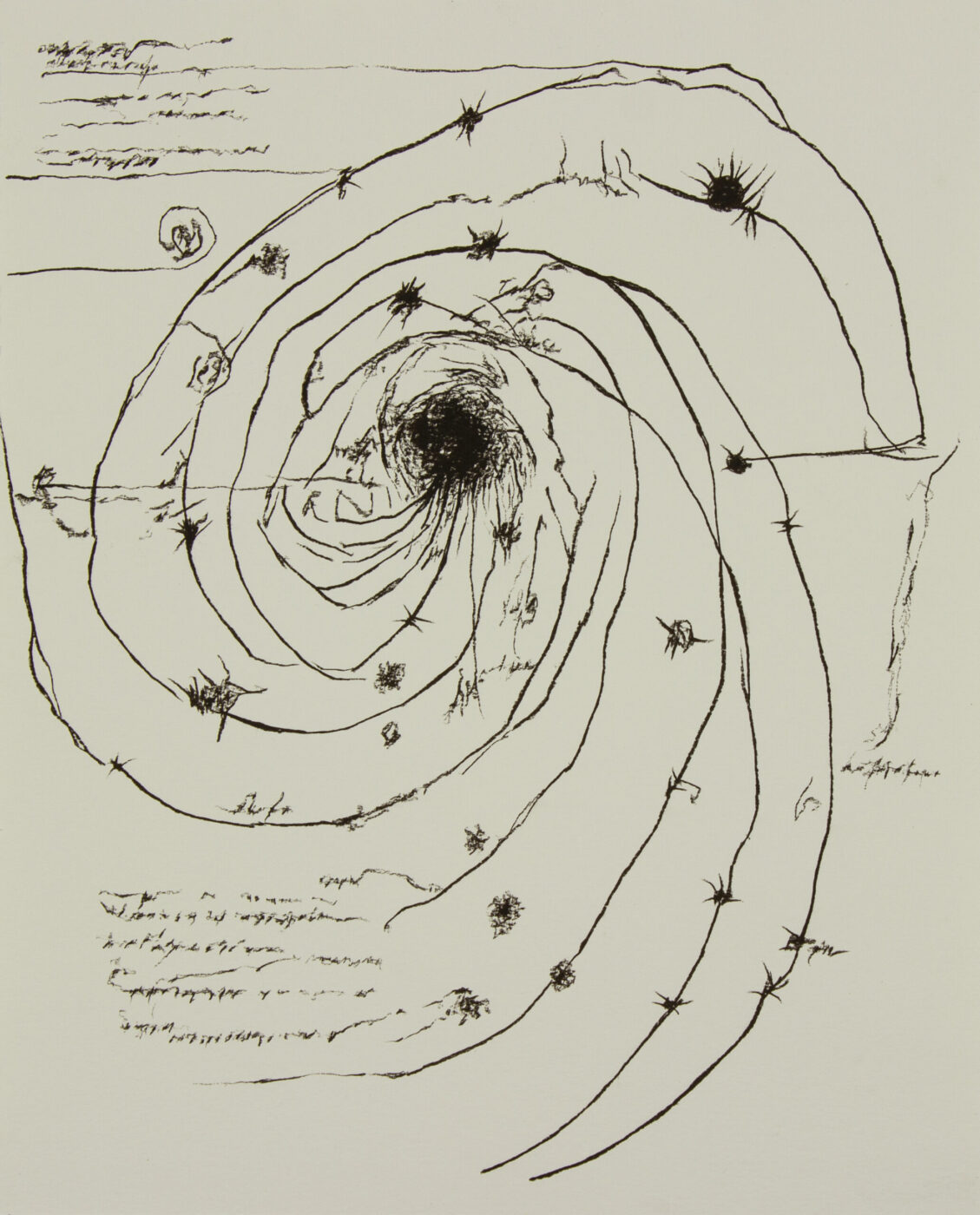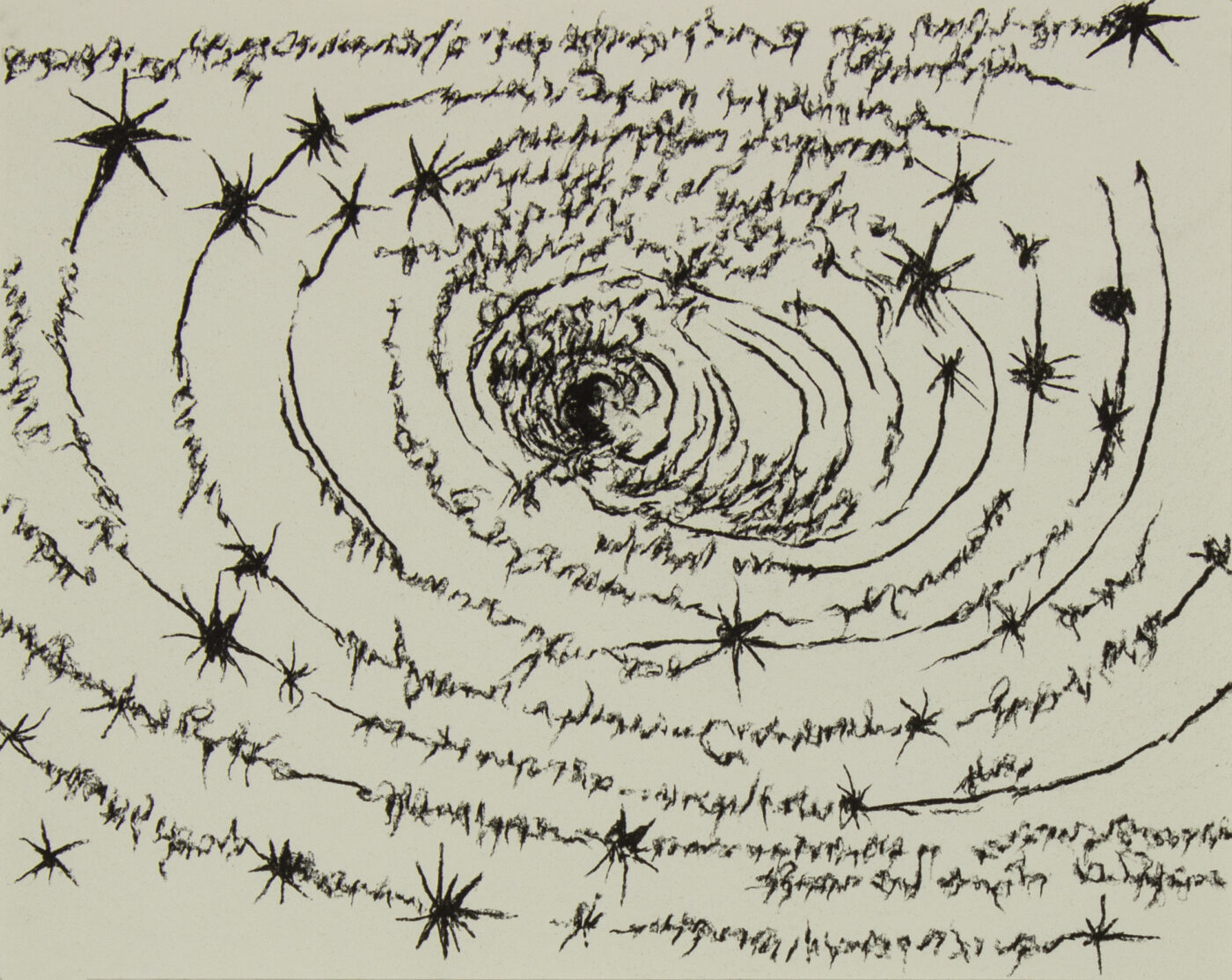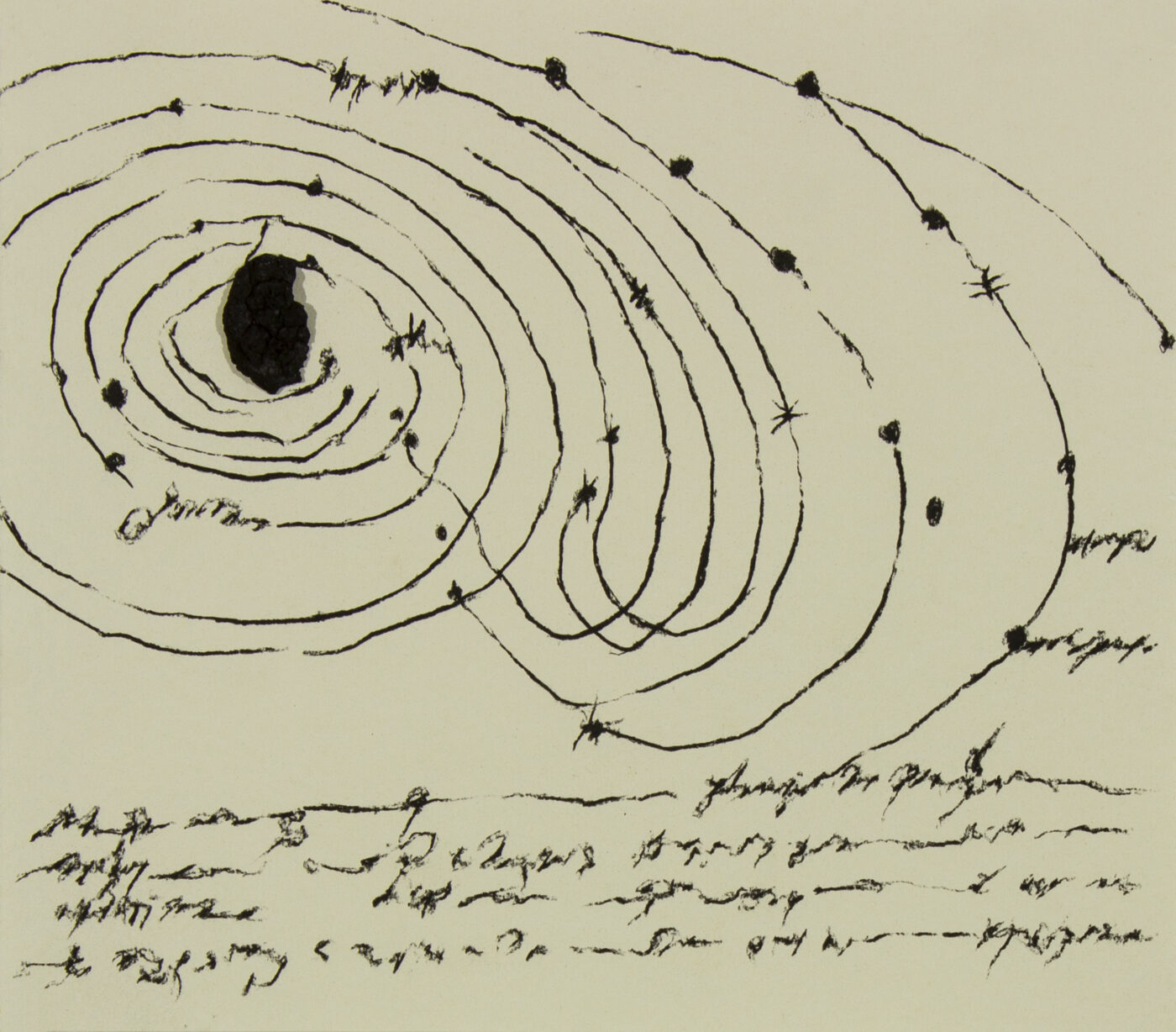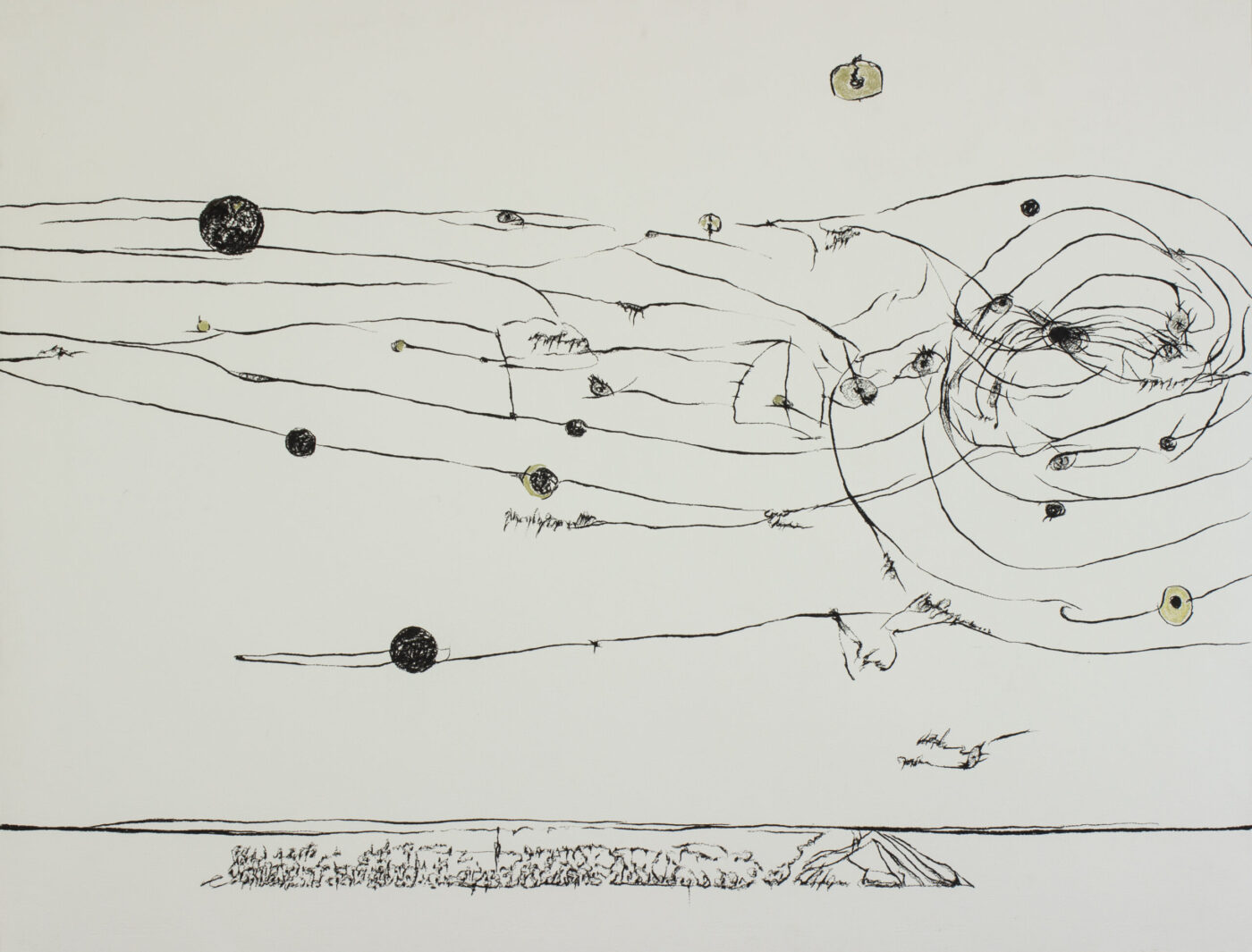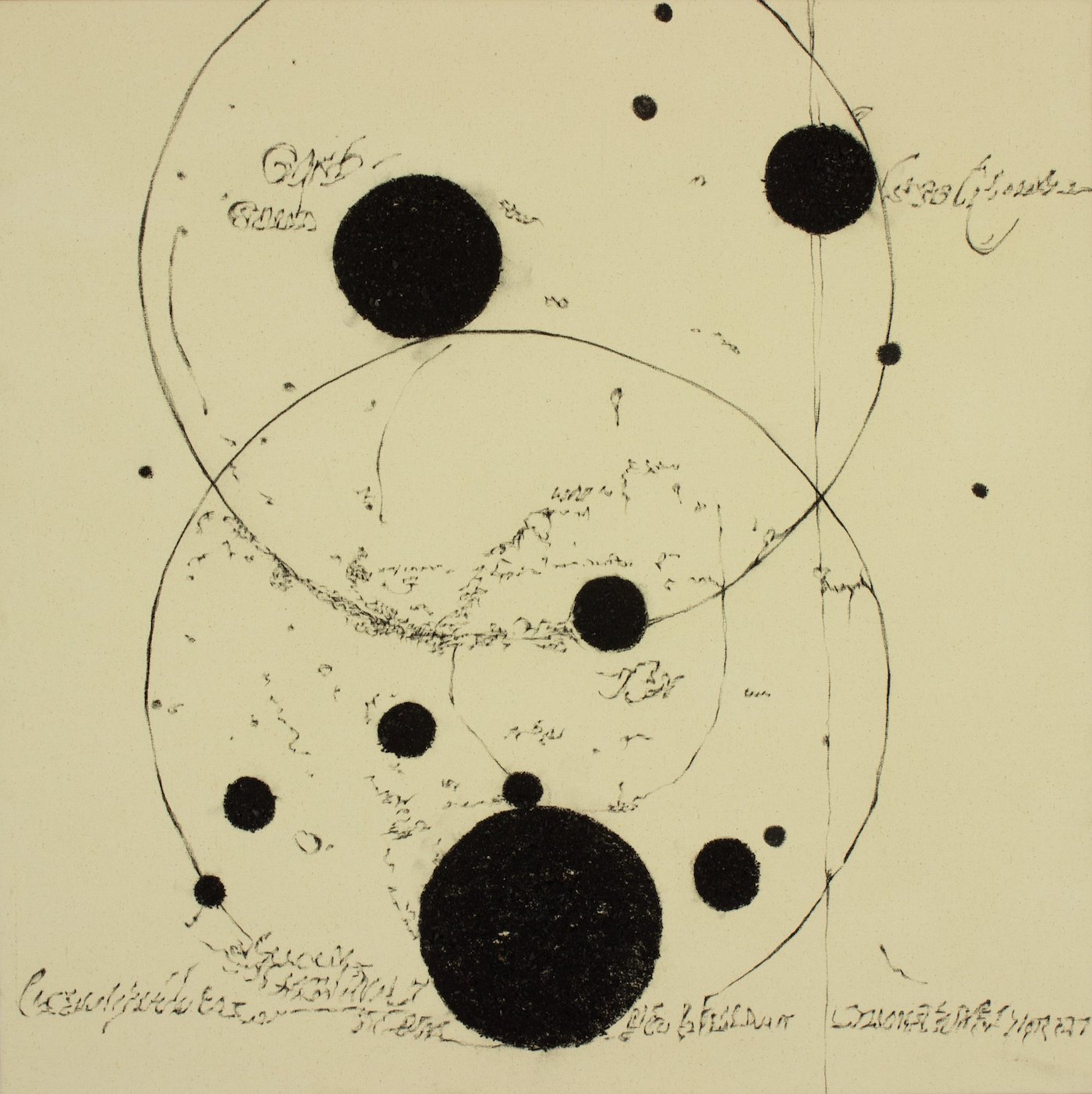Julián Terán
August 11th – October 7th, 2023
INFO
Julián Terán has been known for creating his visual world through precise line and laborious graphics, and for his interest in both topographic maps and taxonomies to represent the sky, that is, in the systems by which humans translate territories and spaces into visual elements. Having grown up in a town in the province of Buenos Aires, Terán’s work resonates with the omni-presence of the Pampa’s landscape, and its enormous skies. His interest in maps and territories has also included limits, borders, translations, the moments when issues of territories jump to the symbolic level of constituting nations.
In his most recent work, drawing and the written word -constitutive elements of his previous work- acquire more gestural characteristics, turning to the exploration of matter and taking this search to the pictorial terrain. Charcoal, brick dust, volcanic ashes, earth materialize unlikely stars in an earthly sky, where maps and landscapes merge in the same space.
In the adjoining room, an installation made with plow discs intervened by the artist through an alchemical procedure, emphasizes Terán’s pointing out of those spaces and devices that connect heaven and earth. The discs, which for years were used to work the land by tracing furrows in the fields of the province of Buenos Aires, now turn their gaze towards a hypothetical galaxy, built with another characteristic element of the Pampean landscape: barbed wire. The sparkles emanating from this corroded swarm are also present in the works on paper and on the canvases in each of the rooms. Darkness and brightness compete for prominence in the works.
Guillermina Mongan, curator of the exhibition, writes: “The Center Everywhere could be synthesized as that sensation generated by the appearance of the first undulation after kilometers of pampas plains. Terán’s controlled and precise line, with which he has traced maps, modulated geographies and inaugurated constellations, today sinks its line in the furrow of the gesture. Like a sensitive ancestral alchemist who allows himself to be eroded by the imprint of matter and the traces of time on the earth, he presents a group of pieces made with materials from different parts of the Pampa plains, materials and objects that after long cycles of working the earth, are now delivered by Terán to a perhaps more idle destiny, tracing wandering orbits between the pampas and the sky”.
Julián Terán (San Miguel del Monte, 1977) has exhibited his work at the Museo de Arte Latinoamericano de Buenos Aires (MALBA), Museo Franklin Rawson de San Juan, Museo de Arte Contemporáneo de Buenos Aires, Museo J.R.Vidal de Corrientes, among other institutions and in galleries in Buenos Aires, Bogotá and New York. He is currently participating in the exhibition A 18 minutos del sol, curated by Javier Villa at the Museum de Modern Art of Buenos Aires, with an installation of drawings engraved on old bricks. In 2022 he received the recognition of being selected for the Urra-Villa Waldberta Residency exchange program, Argentina-Germany. Terán is also a musician and composer who explores contemporary versions of Argentine folklore and has released five solo albums.
Guillermina Mongan (Buenos Aires, 1979) is an art historian (FDA-UNLP and Master in Contemporary Art History and Visual Culture at the Museo Reina Sofía/Universidad Autónoma de Madrid), professor at the Universidad de La Plata, curator and artist. She is a member of several academic research teams on art and culture, including Red Conceptualismos del Sur and Instituto Mauricio Kagel-Universidad Nacional de San Martín. As an artist she participates in the art collectives Cromoactivismo and Serigrafistas Queer. She has co-curated exhibitions at Fundación Klemm, UTDT, MACBA and Museo Reina Sofía, Madrid, among others.
PRESS
11 de Septiembre de 2017
COMO PENSAR EL ARTE DEL SIGLO XX
Laura Isola
Leer artículo
11 de Septiembre de 2017
COMO PENSAR EL ARTE DEL SIGLO XX
Laura Isola
Leer artículo
11 de Septiembre de 2017
COMO PENSAR EL ARTE DEL SIGLO XX
Laura Isola
Leer artículo

